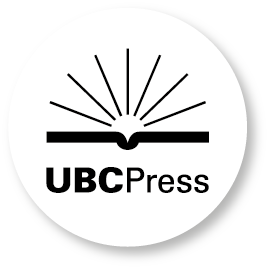
Our Science, Ourselves
How Gender, Race, and Social Movements Shaped the Study of Science
When Christa Kuljian arrived on the Harvard College campus as a first-year student in the fall of 1980 with copies of Our Bodies, Ourselves and Ms. magazine, she was concerned that the women’s movement had peaked in the previous decade. She soon learned, however, that there was a long way to go in terms of achieving equality for women and that social movements would continue to be a critical force in society. She began researching the history of science and gender biases in science, and how they intersect with race, class, and sexuality.
In Our Science, Ourselves, Kuljian tells the origin story of feminist science studies by focusing on the life histories of six key figures—Ruth Hubbard, Rita Arditti, Evelyn Fox Keller, Evelynn Hammonds, Anne Fausto-Sterling, and Banu Subramaniam. These women were part of a trailblazing network of female scientists in the 1970s, 80s, and 90s who were drawn to the Boston area—to Harvard, MIT, and other universities—to study science, to network with other scientists, or to take a job. Inspired by the social and political activism of the women’s movement and organizations such as Science for the People, the Genes and Gender Collective, and the Combahee River Collective, they began to write and teach about women in science, gender and science, and sexist and racist bias and exclusion. They would lead the critiques of E. O. Wilson’s sociobiology in 1975 and Larry Summers’ comments about women in science thirty years later. The book also explores how these contributions differed from those of Nancy Hopkins’, author of the 1999 MIT report on women in science, and a “reluctant feminist.”
Drawing on a rich array of sources that combines published journal articles and books with archival materials and interviews with major luminaries of feminist science studies, Kuljian chronicles and celebrates the contributions that these women have made to our collective scientific knowledge and view of the world.
‘Our Science, Ourselves is a fascinating story of women developing new ways of seeing and doing science. It’s also a wonderful account of how scholars and activists, scientists and artists, Black women and white women worked together to bring about change in the world.’—Beverly Smith, Black feminist health advocate and co-author Combahee River Collective Statement
'This is a remarkable book about a remarkable time when remarkable women began to change the landscape of science, as community and as field of study. In addition to challenging prevailing ideas of objectivity in science, we are provided glimpses of the impact of exclusion, the battles the women were forced to mount and the personal and professional toll of the struggle. As a Black woman in science (and a participant/observer in this story) I am grateful to Kuljian for reminding us of our roots and the challenges ahead if science is to become truly inclusive and excellent.'—Shirley M. Malcom, senior advisor and director of SEA Change at the American Association for the Advancement of Science, and coauthor of The Double Bind: The Price of Being a Minority Woman in Science
'Writing in lucid and accessible prose, and with a primary source base that is extensive and offers a strong background for understanding the personal dimensions of this history, Kuljian has something important to tell us about the origins of feminist science studies.'—Jenna Tonn, assistant professor of the practice, Department of Engineering, Boston College, whose current book project is Boys in the Laboratory: Gender and the Rise of the American Life Sciences
Introduction
Part I. Women in Science
1. Centuries of Exclusion
2. Individuals Persist
3. Epiphanies and Disruptions
Part II. Feminist Critiques of Science, 1970 to 1990
4. Turning a Feminist Eye to Science
5. “You can't be a woman and a scientist”
6. Questioning the Science of Gender
7. “Have Only Men Evolved?”
8. More Questions from the Genes and Gender Collective
9. The Combahee River Collective and the Murders That Shook a City
10. Exploring the Gender of Science
11. The Reluctant Feminist
12. The Wellesley Seminar
13. Reading, Writing, and Myth Busting
14. Tensions in Feminism
Part III. Feminist Science Studies Come of Age, 1986 to 2005
15. Developing New Tools
16. “Building Two-Way Streets”
17. Where Are the Women of Color?
18. Science Studies, Science Wars, and the Sokal Hoax
19. The MIT Report and the Strength of Institutional Power
20. Rejecting “Warmed-Over Sociobiology”
Epilogue. Feminist Science Studies Go Viral?
Appendix 1. Where Are They Now?
Appendix 2. Declaration: Equality for Women in Science
Acknowledgments
Notes
Selected Bibliography
Index








